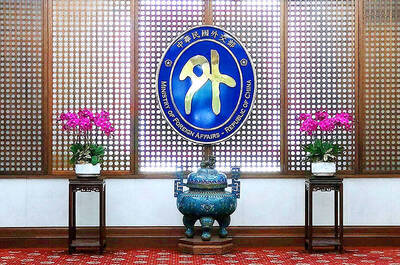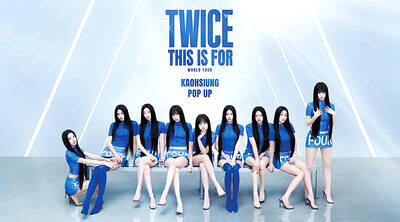Spending on technological research and development (R&D) in Taiwan last year totaled NT$660.8 billion (US$22.88 billion), with a record ratio to GDP of 3.5 percent, the Ministry of Science and Technology said on Friday, while sounding the alarm about the nation’s aging research population.
Of last year’s spending, NT$540.7 billion came from the private sector, up 8.1 percent from 2018, while NT$120.1 billion came from the government, up 3.7 percent from 2018, ministry data showed.
The ration of tech R&D to GDP has been increasing annually, from 3 percent in 2015 to 3.5 percent last year, the data showed.
Private-sector R&D has focused on improving manufacturing processes and developing new products, while the government and educational institutions have pursued cutting-edge research and innovation, especially those related to the government’s “5 plus 2” innovative industries plan, the ministry said.
The “5 plus 2” industries are intelligent machinery, an Asian Silicon Valley, biotechnology, green energy, national defense and aerospace, innovative agriculture and the circular economy.
Of the total spending, 70.3 percent (NT$464.7 billion) was spent on technical development, followed by 22.7 percent (NT$150 billion) on applied research and 7 percent (NT$46.1 billion) on basic research, the data showed.
Spending on basic research has risen compared with 2018 (NT$44.9 billion), but declined compared with 2017 (NT$46.6 billion), 2016 (NT$46.8 billion) and 2015 (NT$47.2 billion), the data showed.
The ministry acknowledged that the ratio of basic research to overall spending is lower than in most other countries, including those of similar scale to Taiwan.
Singapore in 2018 allocated 23.84 percent of spending on technological R&D to basic research, the ministry said, citing data from the Organisation for Economic Co-operation and Development’s Main Science and Technology Indicators.
In the same year, South Korea allocated 14.21 percent to basic research, followed by Japan at 12.57 percent and Israel at 10.41 percent, which were all higher than Taiwan’s 7.29 percent and China’s 5.54 percent, the data showed.
To increase Taiwan’s basic research capacity, the ministry, apart from seeking more funding, would draft a plan to encourage businesses to allocate more effort to the area, it said.
The ministry said that it is concerned about the rate at which the nation’s research population is aging.
Researchers aged 55 or older made up 8.8 percent of the research population last year, up from 7.1 percent in 2015, while those aged 45 to 54 made up 17.7 percent, up 16.5 percent from 2015, the data showed.
Those aged 35 to 44 made up 34.7 percent of the research population last year, down from 35.5 percent in 2017, while those aged 34 or younger made up 38.9 percent, down from 42.1 percent in 2015, the data showed.
The ministry has budgeted NT$1.8 billion next year for programs to cultivate young talent and would make a bid to balance the age groups through other means, it said.
The ministry said that the post-COVID-19 era might pose additional challenges, but the government would continue to promote the “5 plus 2” innovative industries.
It said it would also promote an additional six core strategic industries: information and digital technology, cybersecurity, biomedical technology, defense and aerospace technology, renewable energy and strategic stockpile industries.

ALIGNED THINKING: Taiwan and Japan have a mutual interest in trade, culture and engineering, and can work together for stability, Cho Jung-tai said Taiwan and Japan are two like-minded countries willing to work together to form a “safety barrier” in the Indo-Pacific region, Premier Cho Jung-tai (卓榮泰) yesterday said at the opening ceremony of the 35th Taiwan-Japan Modern Engineering and Technology Symposium in Taipei. Taiwan and Japan are close geographically and closer emotionally, he added. Citing the overflowing of a barrier lake in the Mataian River (馬太鞍溪) in September, Cho said the submersible water level sensors given by Japan during the disaster helped Taiwan monitor the lake’s water levels more accurately. Japan also provided a lot of vaccines early in the outbreak of the COVID-19 pandemic,

The Ministry of Foreign Affairs (MOFA) yesterday voiced dissatisfaction with the Comprehensive and Progressive Agreement for Trans- Pacific Partnership (CPTPP), whose latest meeting, concluded earlier the same day, appeared not to address the country’s application. In a statement, MOFA said the CPTPP commission had "once again failed to fairly process Taiwan’s application," attributing the inaction to the bloc’s "succumbing to political pressure," without elaborating. Taiwan submitted its CPTPP application under the name "Separate Customs Territory of Taiwan, Penghu, Kinmen and Matsu" on Sept. 22, 2021 -- less than a week after China

Kaohsiung Mayor Chen Chi-mai (陳其邁) on Monday announced light shows and themed traffic lights to welcome fans of South Korean pop group Twice to the port city. The group is to play Kaohsiung on Saturday as part of its “This Is For” world tour. It would be the group’s first performance in Taiwan since its debut 10 years ago. The all-female group consists of five South Koreans, three Japanese and Tainan’s Chou Tzu-yu (周子瑜), the first Taiwan-born and raised member of a South Korean girl group. To promote the group’s arrival, the city has been holding a series of events, including a pop-up

A home-style restaurant opened by a Taiwanese woman in Quezon City in Metro Manila has been featured in the first-ever Michelin Guide honoring exceptional restaurants in the Philippines. The restaurant, Fong Wei Wu (豐味屋), was one of 74 eateries to receive a “Michelin Selected” honor in the guide, while one restaurant received two Michelin stars, eight received one star and 25 were awarded a “Bib Gourmand.” The guide, which was limited to restaurants in Metro Manila and Cebu, was published on Oct. 30. In an interview, Feng Wei Wu’s owner and chef, Linda, said that as a restaurateur in her 60s, receiving an